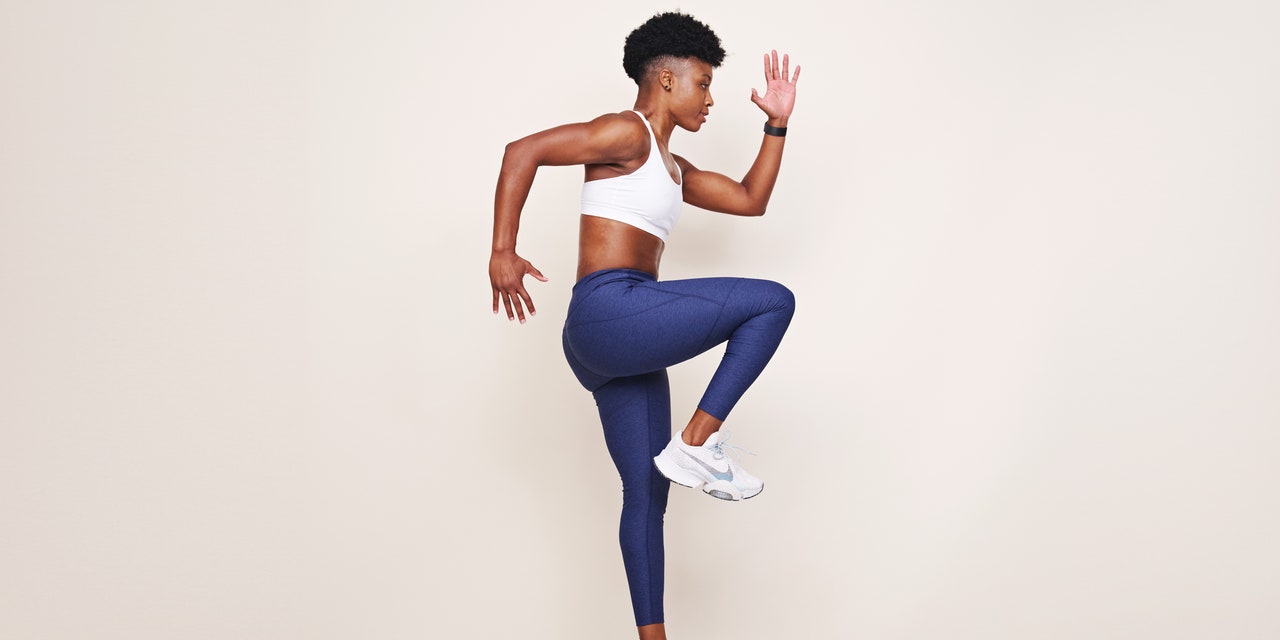If you’re looking to crank up the intensity of your workout, may we suggest adding plyometric exercises to your routine? These challenging moves can supercharge any session—plus provide some serious benefits in the process.
Plyometrics, or plyos for short, are explosive exercises that require you to generate a large amount of force in a short period of time, NASM-certified personal trainer Keith Hodges, CPT, founder of Mind in Muscle Coaching in Los Angeles, tells SELF. The moves involve your anaerobic system, which fuels your body during exercise that’s so intense you can’t keep it up for more than a couple minutes at a time, as SELF previously reported. That’s what makes them so tough.
Although you may not have heard the term plyometrics before, chances are you’re already familiar with them. A box jump, for instance, is a plyometric move, as is a burpee, a hands-release or plyometric push-up, and a pop squat. Maybe you’ve done plyometric exercises in a fitness class or when practicing for a sport that’s heavy on explosive movements (think: track, soccer, or basketball). Or perhaps you’ve seen other people bust out a plyo workout, but have yet to try these intense moves yourself.
You don’t need to go to the gym to do so, either. There are a lot of different plyo exercises you can try at home with just your bodyweight. And there are tons of benefits you can reap by slotting plyometric work into your routine (that is, as long as you do it safely—more on that in a minute.)
We tapped Hodges for expert input on what kind of exercise plyometric moves are and their awesome benefits, as well as how to do them safely and tips for weaving plyos into your exercise program. And, in case you’re feeling inspired after reading this article, we rounded up some great examples of plyometric exercises. Keep scrolling for everything you need to know.
READ RELATED: 53 Best Gifts for Girlfriends in 2023
What kind of exercise are plyometric moves?
Plyometrics are mainly a power exercise since they’re all about performing explosive movements at max effort (or close to max effort). Plyos are also good for challenging your strength, since your muscles have to work hard to perform them correctly. And plyometrics can count as cardio, too, since they are a high-intensity exercise that will get your breathless fast. That’s why you’ll commonly see them programmed in HIIT workouts.
Now, people may wonder if plyometrics are an isometric exercise technique. The answer? Nope. That’s because plyometrics involve quick movements and concentric (shortening) and eccentric (lengthening) muscle contractions. An isometric exercise, by contrast, involves muscles staying super still while they work. A plank, for example, is an isometric exercise.
In terms of which muscle groups plyos work, for the most part they are actually full-body movements, says Hodges. That said, many plyometric exercises—like jumping lunges, pop squats, and tuck jumps—place an extra emphasis on your core and lower half. But there are some upper-body-focused plyo moves, too, says Hodges—for instance, plyo push-ups and explosive medicine ball throws.
What are the benefits of plyometric exercises?
There are many benefits of plyometric exercises that might just convince you to add them to your workout routine. They can help increase speed, strength, endurance, agility, and coordination, says Hodges. Plyos can also boost tendon strength and increase your rate of force development—essentially, your body’s ability to generate a lot of power really fast, says Hodges. This can come in handy for athletes whose sports require them to perform quick, powerful movements—like track athletes, for instance, or volleyball players.





